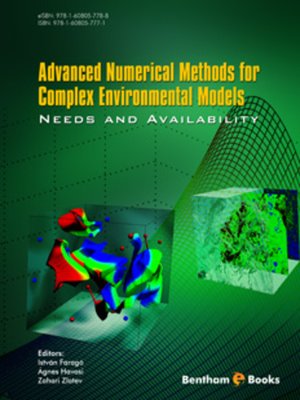Advanced Numerical Methods for Complex Environmental Models
ebook ∣ Needs and Availability
By István Faragó

Sign up to save your library
With an OverDrive account, you can save your favorite libraries for at-a-glance information about availability. Find out more about OverDrive accounts.
Find this title in Libby, the library reading app by OverDrive.



Search for a digital library with this title
Title found at these libraries:
| Loading... |
High air pollution levels pose a significant threat to plants, animals and human beings. Efforts by researchers are directed towards keeping air pollution levels below well defined 'critical' levels in order to maintain a sustainable atmosphere and environmental system. The application of advanced mathematical models is important for researchers to achieve this goal as efficiently as possible.
Mathematical models can be used to predict answers to many important questions about the environment. However, their application will be successful only when several theoretical and practical obstacles are efficiently removed. A successfully applicable mathematical model needs to enable researchers to:
This monograph thoroughly describes mathematical methods useful for various situations in environmental modeling—including finite difference methods, splitting methods, parallel computation, etc.—and provides a framework for resolving problems posed in relation to the points listed above. Chapters are written by well-known specialists making this book a handy reference for researchers, university teachers and students working and studying in the areas of air pollution, meteorology, applied mathematics and computer science.






